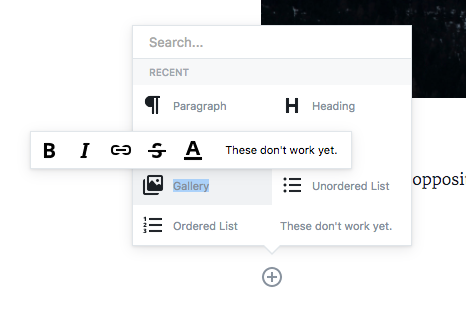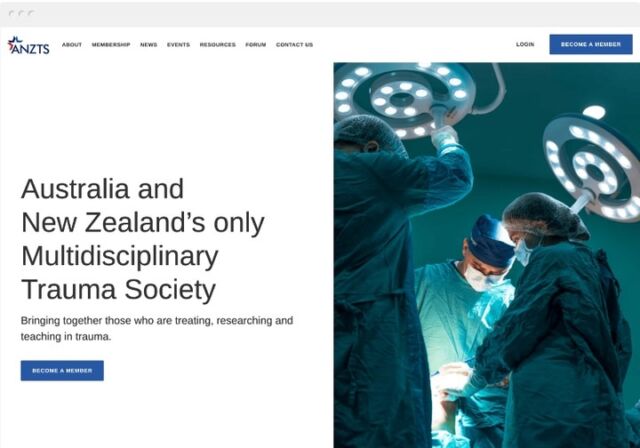It is safe to say that WordPress has built an empire for itself. Not only is it an amazing blogging platform it is also one of the best CMS (content management systems) available. The open source nature of WordPress means it is infinitely customisable and can help you create a truly beautiful website. WordPress powers over 75 million websites, which is roughly 28.5% of the internet! In June 2017, one of WordPress’ founding developers, Matt Mullenweg, announced Gutenberg would be part of the core update to WordPress 5.0. So join us as we discuss the pros and cons of WordPress’ newest brainchild.
What is Gutenberg?
Named after Johannes Gutenberg (often credited as the inventor of moving type), Gutenberg is an update to the very outdated Visual Composer that has long been part of WordPress. The current Visual Composer requires knowledge of HTML and shortodes. Gutenberg aims to make this process easier for new users by introducing a system similar to popular “drag-n-drop” website builders like Wix. Currently it is available as a beta plugin but the current WordPress roadmap aims to have Gutenberg as a core feature by WordPress 5.0
What Are the Goals of Gutenberg?
As mentioned above, the overall goal of Gutenberg is to make interacting with WordPress easier on the user. It utilises “little blocks” or small editable sections to add content to a page. Users would be able to easily edit, delete and move blocks of content similar to the drag-n-drop style of website editing we see on other website builders. It will basically bring WordPress up to date with its competitors – or so is the general hope of the developers. It also aims to give the user a larger content creation area.
Further, the new style of text editing will be mobile responsive, meaning you can “edit on the go” via your mobile and tablet. Theme developers also, theoretically, won’t need to bundle a lot of plugins together to get a website working – Gutenberg should cover the functionality of many of these plugins. This does have the added benefit of creating better security on WordPress, where outdated plugins could compromise security. For those who still like the old text editor, there is a way to switch to the “classic” text editor, however it is admittedly difficult to find. Essentially Gutenberg will be a standard, portable, method of creating rich layouts.
Security and WordPress 5.0
With WordPress featuring largely, this year, in regards to issues with security breaches, brute force attacks and more, there is of course a need for more security – beyond ensuring you keep your site and plugins updated. 5.0 hopes to introduce a two-factor authentication system to give you more security. So far there will be for options for two-factor authentication:
- Email authorisation
- Google Authenticator style Mobile App
- Security Keys sent to 3rd party devices (similar to mobile app authentication)
- A backup verification code/one time password
Much like other programs, WordPress homes to set up a system where you will need some form of secondary code or authentication to ensure those logging into your website are meant to be there. Further, the development team hopes to implement a system of unique, application passwords. This is to stop hackers from using reverse engineering on applications to read the website source code and steal passwords, allowing them access to the main site. While this may make logging into your site a little more time consuming, it is a good move to repair security breaches due to WordPress’ open-source nature.
WordPress 5.0, Gutenberg Beta Testing and Reviews
While the aims of WordPress 5.0 and Gutenberg in particular are commendable, no update is without its issues. Gutenberg is still in beta testing and is only available as a plugin. Early results, however, are not favourable with the plugin receiving only 2,000 installs, a 2.5 rating and a bevy of negative reviews. We are going to delve into some of them today.
Content Creation – Writing
Despite the overall aim of 5.0 to be more user friendly, the new interface is not very intuitive. In fact, it seems to have made interacting with the WordPress page editor more difficult than it should be. While the idea of having editable blocks is interesting, it can make content creation an exhausting process. Each new element on a page needs to be contained in its own block. This means you need to create a new block for each paragraph, each header, each image, each video, each table, each list etc. It also takes time to find the correct content block for your needs – different blocks have different formatting functions. If you start using a block that doesn’t have the formatting functions you need, you have to start over.
But what about copy-pasting? That function is almost completely destroyed in 5.0. Attempting to copy and paste from a Word or Google Doc, or even from one content block to another, will completely remove any formatting you previously used. So if you prefer to create your content in a document, then copy-paste the perfected, final result into WordPress, you will need to find new copywriting techniques. Finally, simple functions like turning a line of text into a header is no longer a 1-step process but 2 or more. It is safe to say that, so far, written content creation is less intuitive than before.
Content Creation – Media
Let’s face it, video and map embedding hasn’t always been easy in WordPress. 5.0 will see the process become even harder. For some reason the current system of adding iframes to the Gutenberg blocks deletes a lot of the code, forcing the video into the block format, rather than using any custom formatting you might want or need.
Similarly, image use is less intuitive than the development team could have hoped. Current WordPress versions allow you to change the size of your image, the placement on the page, whether it links to a larger version of the image or a custom URL and even allows you to crop and rotate the image before placing it on the page. Gutenberg, however, does not allow you to adjust images within WordPress. You will need to make your changes in another image editor – such as Photoshop – before uploading it. Further, attempting to place it on the page is also difficult. If you want to change the size of an image, you are restricted to using the text-wrap options only. This, in turn, only halves the size of the image and moves it on the page to allow space for more text. It makes page layout limited.
SEO and Back Pocket Issues
The introduction of the block-content system leads to some interesting SEO considerations. Yoast, a popular SEO plugin – and BSO Digital’s SEO plugin of choice – pointed out that it opens up the possibility of considering SEO at a block level, rather than as a whole page. However, it is as yet unknown how well this will work with Google algorithms. Currently, pages are optimised for a single keyword, in order to improve google ranking. Meta descriptions, alt tags, content and secondary keywords are all developed around this. By reducing SEO to a block-by-block level could make the process of optimising a page more difficult. Will Google analyse a page by page or by block? Will this cause issues with competing keywords and meta descriptions? We will have to wait and see how Gutenberg rolls out.
Finally, some digital agencies are already pointing out difficulties with the major change 5.0 will bring. With the page layout creator changing so radically, this could lead to a lot of broken pages and clean-up work. Some agencies have already tested out a fully Gutenberg roll out on smaller, simpler sites. They have noted it has caused issues, already, with theme and plugin compatibility, broken pages and broken layouts – with an estimation of 20 hours worth of repair work to the simplest of sites. This means changes could cause a fair few developer headaches.
WordPress 5.0 and the Future
WordPress 5.0 and Gutenberg are still in their early stages but reactions are very mixed already. While the update proves to be a boon for bloggers. But WordPress is more than a blogging platform these days. Many feel that the release of such a huge new core feature is rushed and should be implemented in WordPress 6.0 instead. At BSO Digital, we are watching the WordPress roadmap with great interest to ensure we continue providing you with the best website and digital solutions.
Thinking about a website update? Contact us today so we can discuss your exciting new project!




















